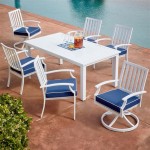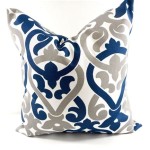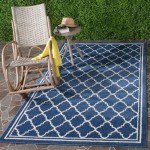Outdoor Shower Head and Hose: A Comprehensive Guide
Outdoor showers have evolved from utilitarian rinsing stations to stylish and functional additions to homes, gardens, and pool areas. The shower head and hose form the core of any outdoor shower system, dictating water flow, pressure, coverage area, and overall user experience. Selecting the right components involves considering various factors such as material, spray patterns, ease of installation, and compatibility with existing plumbing.
This article provides a comprehensive overview of outdoor shower heads and hoses, exploring the different types available, key features to consider, and practical advice for installation and maintenance. The information presented herein aims to enable homeowners and contractors to make informed decisions when designing or upgrading an outdoor showering space.
Understanding the Different Types of Shower Heads
Shower heads used in outdoor settings are not universally identical. They differ significantly in terms of material composition, spray patterns, and mounting mechanisms. Selecting the right shower head depends on the desired aesthetic, water pressure requirements, and the intended use of the outdoor shower.
Fixed Shower Heads: These are the most common type and are typically mounted directly to a shower arm extending from the wall or a freestanding pole. Fixed shower heads offer simplicity and durability. Materials used can range from chrome-plated brass to stainless steel and durable plastics. The spray pattern is usually fixed, offering a consistent and reliable water flow. However, fixed shower heads offer limited adjustability in terms of spray direction and coverage area.
Rainfall Shower Heads: Rainfall shower heads are designed to mimic the sensation of standing under a gentle rain shower. They are typically larger than fixed shower heads and feature a wide, flat surface that distributes water evenly over a broad area. Rainfall shower heads are often preferred for their luxurious and relaxing shower experience. They often require higher water pressure to function effectively, especially in larger sizes. The mounting is usually overhead, creating a cascading effect.
Handheld Shower Heads: Handheld shower heads offer increased flexibility and control. They are connected to a shower hose and can be detached from a mounting bracket, allowing the user to direct the water flow precisely where it is needed. Handheld shower heads are particularly useful for rinsing off specific areas, washing pets, or cleaning outdoor equipment. Many models offer multiple spray patterns, providing added versatility. The hose length is a critical factor to consider, ensuring sufficient reach for comfortable use.
Multiple Spray Pattern Shower Heads: Whether fixed or handheld, some shower heads offer multiple spray patterns. These patterns can range from a gentle massage spray to a concentrated jet spray. This versatility allows users to customize their shower experience based on their preferences and needs. These often include functionalities such as pulsating massage, misting, and aeration. The mechanisms for switching between patterns can vary but generally involve a rotating dial or a button on the shower head itself.
Key Considerations When Selecting a Shower Hose
The shower hose is equally as important as the shower head, particularly for handheld models. The hose must be durable, flexible, and resistant to the elements. The hose's length, material, and connection type are critical factors to consider during selection.
Material: The most common materials used for shower hoses are stainless steel, rubber, and reinforced PVC. Stainless steel hoses offer excellent durability and resistance to corrosion. They often feature a double-interlock design for added strength and flexibility. Rubber hoses are more flexible but may be prone to cracking and degradation over time, especially when exposed to direct sunlight. Reinforced PVC hoses offer a balance of flexibility and durability at a lower cost. These often have an internal braiding to withstand higher water pressure.
Length: The length of the shower hose should be chosen based on the intended use and the size of the shower area. A longer hose provides greater reach and flexibility, but it can also be more prone to tangling. A shorter hose is more manageable but may limit the user's movement. Standard lengths range from 60 inches to 84 inches. Consideration should be given to individuals who may have mobility limitations, requiring a longer hose for ease of use.
Connection Type: Shower hoses typically connect to the shower arm and the shower head using standard threaded fittings. These fittings are generally either 1/2-inch NPT (National Pipe Thread) or 3/8-inch NPT. It is important to ensure that the hose fittings are compatible with the existing plumbing. The fittings should be made of durable materials such as brass or stainless steel to prevent corrosion and leaks. The presence of rubber washers or Teflon tape during installation will provide a watertight seal.
Flexibility and Kink Resistance: A flexible hose makes for a more comfortable shower experience. Stiff hoses can be difficult to maneuver and may be prone to kinking. Look for hoses with a smooth inner lining and a flexible outer layer. Kink-resistant hoses are designed to prevent the hose from collapsing and restricting water flow. These hoses often feature an internal coil or braiding that provides added support.
Installation and Maintenance of Outdoor Shower Components
Proper installation and regular maintenance are essential for ensuring the longevity and optimal performance of outdoor shower heads and hoses. Following the manufacturer's instructions and implementing preventative measures can help prevent leaks, corrosion, and other common problems.
Installation: Before installing a new shower head or hose, it is important to turn off the water supply to the shower. Remove the old shower head or hose and clean the threads on the shower arm. Apply Teflon tape to the threads to create a watertight seal. Screw the new shower head or hose onto the shower arm, tightening it securely with a wrench. Be careful not to overtighten the fittings, as this can damage the threads. For handheld shower heads, ensure that the mounting bracket is securely attached to the wall or shower pole.
Winterization: In cold climates, it is essential to winterize the outdoor shower to prevent freezing and damage to the plumbing. This typically involves draining all the water from the pipes and shower components. Disconnect the shower head and hose and store them indoors. Insulate the pipes to protect them from freezing temperatures. Consult a plumber for specific winterization procedures for your region.
Cleaning: Regular cleaning is essential for preventing mineral buildup and maintaining optimal water flow. Mineral deposits can clog the shower head nozzles and restrict water pressure. To clean the shower head, remove it from the shower arm and soak it in a solution of vinegar and water for several hours. Use a soft brush to scrub away any remaining mineral deposits. Rinse the shower head thoroughly with clean water before reinstalling it. The hose can be wiped down with a damp cloth to remove dirt and grime. Avoid using abrasive cleaners or harsh chemicals, as these can damage the finish of the shower head and hose.
Leak Detection and Repair: Regularly inspect the shower head and hose for leaks. Leaks can occur at the fittings or along the length of the hose. Tighten the fittings with a wrench to stop leaks at the connections. If the hose is leaking, it may need to be replaced. Small leaks can sometimes be repaired with Teflon tape or pipe sealant. However, it is generally recommended to replace a damaged hose to ensure long-term reliability.
Material Selection for Longevity: The outdoor environment poses unique challenges to plumbing fixtures. Prolonged exposure to sunlight, rain, and temperature fluctuations can accelerate corrosion and degradation. Selecting shower heads and hoses made from durable, weather-resistant materials is crucial for maximizing their lifespan. Stainless steel, marine-grade brass, and UV-resistant plastics are excellent choices for outdoor applications. Avoid using materials that are prone to rust or corrosion, such as standard steel or low-quality plastics.
Matching Style and Functionality: Outdoor showers can be designed to complement the surrounding landscape and architecture. Shower heads and hoses are available in a wide range of styles, finishes, and designs. Consider the overall aesthetic of your outdoor space when selecting shower components. Choose a finish that is both visually appealing and resistant to the elements. Brushed nickel, oil-rubbed bronze, and powder-coated finishes are popular choices for outdoor showers.
In summary, the selection of the appropriate outdoor shower head and hose requires careful consideration of factors such as intended use, environmental conditions, desired aesthetic, and budget. By understanding the different types of shower heads and hoses available, and by following proper installation and maintenance procedures, homeowners can create a functional and enjoyable outdoor showering experience.

Bwe 2 Spray Outdoor Wall Bar Shower Kit 8 In Round Rain Head With Hand And Cross Knobs Matte Black A 98015 B The Home

How To Make An Outdoor Shower With A Garden Hose Homejelly

Two 3 Shower Heads Foot Hose Bibb Ps 3200 2x Ada

2 Handle 1 Spray Outdoor Exposed Shower Faucet In Chrome Plated Brass Valve Included 67252 The Home

Outdoor Shower Co Wall Mount Hot Cold Riviera Lever Handle Valve 10 Head Hand Spray Hose 316 Stainless Steel Cap 144rds

Camco Rv Outdoor Shower Head Kit With Suction Cup Mount Camping World

Gotonovo Outdoor Shower Kit 6 Inch Square Head Wall Mount Exposed Fixture With Adjustable Slide Bar Double Cross Handles Brass Mix Valve

Outdoor Shower Dva L2 Hs Wall Mount Hot Cold Lever Handle Valve 8 Head Hand Spray Hose

Camco Camper Rv Outdoor Shower Head Kit Features A 5 Foot Hose With Garden Fitting Suction Cup Mount 43762

Outdoor Shower Fta W50 Hchs Waterline Wall Mount Hot Cold Unit Hand Spray 8 Head








